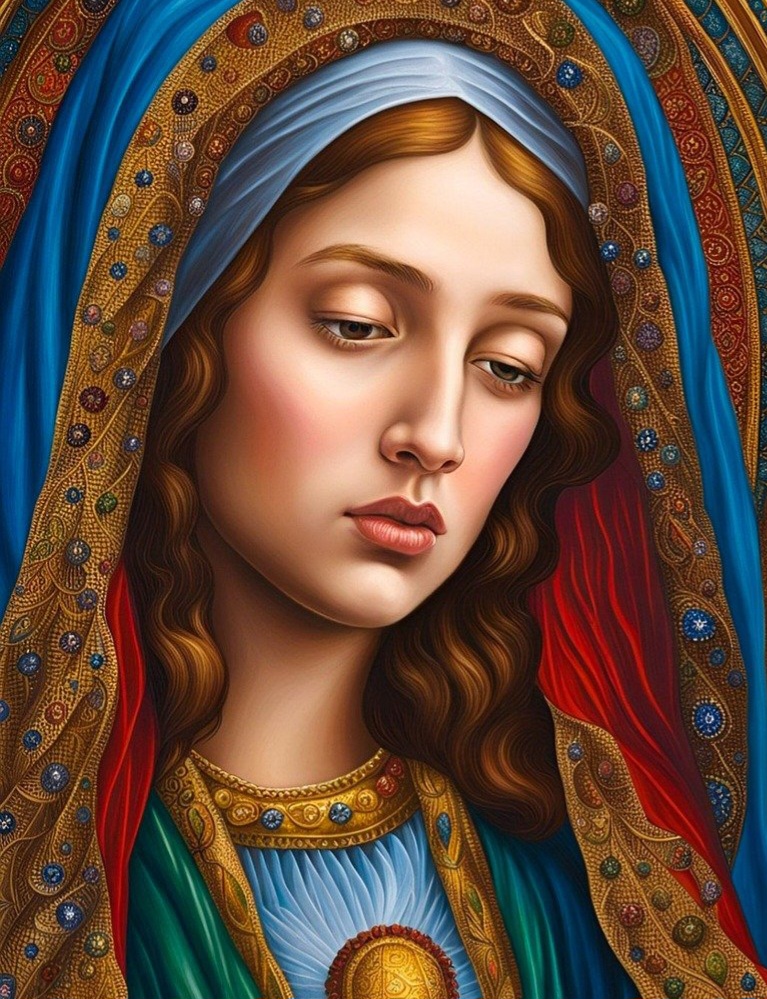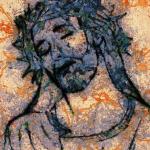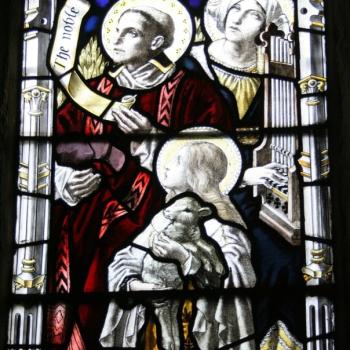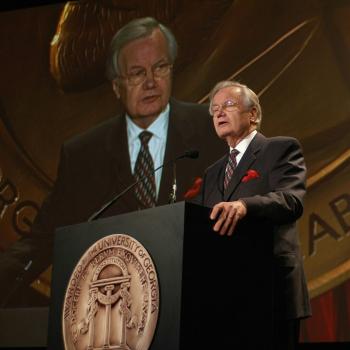
Celebrating a Biblical Heroine During Easter & Women’s History Month
Who was Mary Magdalene? She has been portrayed as a sinner, prophet and saint, among other things. She appears in all four Gospels, but only briefly, and the Bible gives no specifics about her life outside her discipleship. She lived 2,000 years ago, yet people throughout the world know her name. And we continue to talk about her. Why does Mary Magdalene continue to fascinate us?
“It is Mary Magdalene who is the KEY figure in (the) historical reconstruction of what happened Sunday morning after the crucifixion with the discovery of an empty tomb,” says retired professor James Tabor.
Either alone or with one or more other women named Mary, she goes to the tomb to anoint Jesus’ body, only to discover that the stone blocking the entrance has been moved away. Jesus’ body is gone.
3 Women or One?
We first meet Mary Magdalene in Luke 8, where we learn she became a follower of Christ after he cast out seven demons from her. The Bible says she had “demons,” but modern religious scholars suggest she suffered from some sort of mental illness and/or epilepsy.
Whatever her problem, the point is that she suffered greatly and was suddenly freed from her debilitating condition through Christ’s healing power.
Magdalene was not her surname but rather identified as a woman from Magdala, a fishing town by the Sea of Galilee. This identifier should have been enough to separate her from other women, but it wasn’t.
During a sermon or homily, in 591 A.D., Pope Gregory I created a composite woman of Mary Magdalene, Mary of Bethany and an unnamed prostitute.
Thus, Mary Magdalene became – in the eyes of the Western church – the sister of Lazarus and Martha, as well as a repentant sinner. This same pope also interpreted the seven “demons” to mean the seven deadly sins and condemned her for them as well.
No one knows whether this version of Mary was the result of real confusion by Pope Gregory I or a deliberate attempt to denigrate the real Mary Magdalene. But it wasn’t until 1969 that Pope Paul VI corrected the mistake.
The Eastern Orthodox Church and its members, on the other hand, continued to revere Mary as a devoted disciple of Christ for 2,000 years.
An Important Disciple
Yet, we need to look beyond the controversy that has surrounded Mary Magdalene during the last 2,000 years and focus on the reasons she was an important disciple.
She was one in a group of women who traveled with Christ and supported his ministry with their own funds. She also accompanied Christ’s mother at the cross, was the first person to see the risen Lord and was the first to spread the resurrection news.
The gospels give differing accounts about the first Easter Sunday, but Mary Magdalene is the key person in each narrative, points out James Tabor, who served as professor of religious studies at the University of North Carolina-Charlotte until his retirement in 2022.
Tabor taught Christian origins and ancient Judaism for more than 30 years and was department chair for a decade. In addition to teaching, he conducted extensive archaeological research in Israel and Jordan.
We Know Her Name
Mary Magdalene is important for another reason: The Bible mentions her by name. In biblical times, women were almost an afterthought. A woman’s reason for existing was to marry and have sons who could help the family, support her later in life and carry on the family name.
Many biblical stories omit the major character’s name –- the unnamed prostitute, the woman at the well, Peter’s mother-in-law, the bleeding woman and the poor widow who put all the money she had in the temple’s collection box.
But the scripture shares Mary Magdalene’s name with us.
“….the fact that she’s named is a big deal,” says Robert Cargill, editor of Biblical Archaeology Review and assistant professor of classics and religious studies at the University of Iowa.
Maligning Mary Magdalene
But Mary was a woman, and the disciples – who became known as the apostles after Christ’s ascension – would not tolerate being led by a woman.
“Yes, she was there, but remember, she and the others were surely less than the reliable witnesses” – e.g., the male witnesses, Tabor says. “What is important is that even in Mark, she can not be eliminated. She was there at the first, and she is clearly the first, if John is to be given any weight at all.”
But Christ’s male disciples and the church leaders who followed them were eager to rid themselves of this woman who dared to be a confidante of Christ.
Thus, Mary Magdalene disappeared from scripture. The books that described her as Jesus’ “most intimate and faithful follower” were not included in the Bible, Tabor explains.
Cargill says that “there are many scholars who argue that because Jesus empowered women to such an extent early in his ministry, it made some of the men who would lead the early church later on uncomfortable,” he adds.
“And so there were two responses to this”: Some see Mary Magdalene as the repentant prostitute, and others see her as a highly important disciple.
The Repentant Prostitute: “By turning (her) into a prostitute, then she is not as important,” Cargill explains. “It diminishes her in some way. She couldn’t have been a leader because look at what she did for a living.”
The Important Disciple: The second response was to elevate Mary Magdalene, he says. “The Gospel of Mary, a text dating from the second century A.D. that surfaced in Egypt in 1896, placed Mary Magdalene above Jesus’ male disciples in knowledge and influence.
“She also featured prominently in the so-called Gnostic Gospels, a group of texts believed to have been written by early Christians as far back as the second century A.D., but not discovered until 1945, near the Egyptian town of Nag Hammadi,” he says.
From Blank Canvas to Elaborate Tapestry
If the New Testament were our only source of information about Mary Magdalene, we would be short on facts. Did Mary Magdalene have children? The Bible doesn’t say. Was she a widow? We don’t know. How did she obtain her wealth? We have no idea. Was she a strong-willed person? Probably. Did she have leadership qualities? Again, she probably did, but the Bible doesn’t give us any specifics.
So, why does Mary Magdalene continue to fascinate us? The answer may be that she’s a blank canvas upon which we can create whatever person we want her to be. And that’s exactly what people have done for 2,000 years.
The Smithsonian explains the situation this way: “Beginning with the threads of (a) few statements in the earliest Christian records, dating to the first through third centuries, an elaborate tapestry was woven, leading to a portrait of St. Mary Magdalene in which the most consequential note – that she was a repentant prostitute – is almost certainly untrue,” Smithsonian explains.
Over time, Mary Magdalene lost her true identity. She ceased to be an important disciple on par with Peter and was labeled a repentant sinner or Jesus’ wife. It’s doubtful either label is close to the truth.
The passing years removed Christians from the immediacy of Christ’s earthly ministry, and people’s memories became less and less reliable. The church became the source of information for the general population, and even the church didn’t get everything right.
“Most Christians were illiterate; they received their traditions through the complex work of memory and interpretation, not history, that led only eventually to texts,” the Smithsonian explains.
“Once the sacred texts were authoritatively set, the exegetes who interpreted them could make careful distinctions, keeping the roster of women separate, but common preachers were less careful….
“Confusions attached to Mary Magdalene’s character were compounded across time as her image was conscripted into one power struggle after another, and twisted accordingly,” Smithsonian explains.
Major church conflicts focused on sexuality:
- The all-male clergy
- Celibacy
- The branding of theological diversity as heresy
- “Chivalrous” violence
- The marketing of sainthood, whether in the time of Constantine, the Counter-Reformation, the Romantic era, or the Industrial Age
One Firestorm After Another
Misconceptions about Mary Magdalene continued into the 20th and 21st centuries – and the anger exploded when Greek writer Nikos Kazantzakis published The Last Temptation of Christ in 1955.
The book depicts Mary as Christ’s wife and has an ending that caused a furor. The Greek Orthodox Church excommunicated Kazantzakis, the Catholic Church banned his book, and Christians around the world became enraged.
When Martin Scorsese directed a film adaption of the book, many Christians were livid. The film’s ending shows Satan tempting the dying Christ and includes graphic visions of a normal life with the former prostitute Mary Magdalene and their children.
The uproar eventually died down, but in 2003, Dan Brown’s best-selling novel, The Da Vinci Code, renewed the furor when it became a blockbuster film starring Tom Hanks.
The Da Vinci Code concerns a quest for the Holy Grail, conspiracies within the Catholic Church and the possibility that Jesus and Mary Magdalene had a child together. The book was clearly fiction, but fact and fiction became blurred in many people’s minds.
But controversies about the relationship between Jesus and Mary don’t end there. In 2012, Harvard professor Karen King announced the discovery of a papyrus fragment in which Christ refers to Mary Magdalene as his wife. Unlike The Last Temptation of Christ and The Da Vinci Code, the papyrus was presented as factual — until King announced it probably wasn’t.
Mary Magdalene in Art
Another reason for our fascination with Mary Magdalene is her depiction in art. Mary was second only to the virgin Mary in popularity among religious artists in the 14th-17th centuries. And the paintings reflected society’s ever-changing view of this woman.
Artists painted her “as a sinner, a reformed prostitute, a miracle worker, a penitent, she is shown in Christ’s Passion and Resurrection scenes, and as a saint,” according to the Drawing Academy.
Mary Magdalene as a reformed prostitute was especially popular during the Renaissance, which began in 14th-century Italy. Prostitution was a problem in that country, and paintings of the redeemed Mary Magdelene conveyed a powerful moral message.
But ironically, some artists combined eroticism with religion in images of a sad-faced Mary Magdalene whose nude body was covered only by her long flowing hair. The artistic messages were definitely mixed — erotic versus religious.
Even centuries after her death, Mary Magdalene could not escape her supposed sexual entanglement with Christ.
An Apostle to the Apostles
Yet, wise people have moved beyond sex as it relates to Mary Magdalene’s story. St. Thomas Aquinas (c. 1225-1274) rightly called her an apostle to the apostles.
The word “apostle” means “one sent on a mission, especially on a mission to preach the gospel.” In fact, Christ made her his first apostle shortly after the resurrection when he sent her to share the good news with the other disciples.
The Eastern Church says Mary Magdelene was one of Christ’s most faithful disciples. It’s easy to imagine her traveling with Jesus and the others day after day, listening to Christ’s lessons and absorbing face-to-face messages from the Master. There were no filters such as we have – simply direct teachings from the Lord. To say they were powerful is an understatement.
The Eastern Church goes on to say Mary Magdalene “holds the utmost prominence among Christ’s female disciples and, in fact, stands as the most significant female figure in the Christian Church, second only to the Mother of God….
“St. Mary Magdalene’s title as ‘Apostle to the Apostles’ serves as a powerful reminder that everyone, whether male or female, has a vital role in sharing the good news of Jesus Christ. As we reflect on the significance of the apostles’ lent, let us not overlook the significant contribution of women like St. Mary Magdalene….
“May we honor their legacy by recognizing and celebrating the important role of women in spreading the love of Jesus Christ to all corners of the world.”
That statement reminds me of Galatians 3: 28, which says, “There is neither Jew nor Greek, there is neither slave nor free, there is neither male nor female; for you are all one in Christ Jesus.”
It’s sad that Mary’s writings – if they ever existed — are gone. I would have loved to read what she had to say. But perhaps in the 21st century, Mary Magdalene is finally getting the recognition she deserves as a major apostle for Christ.













